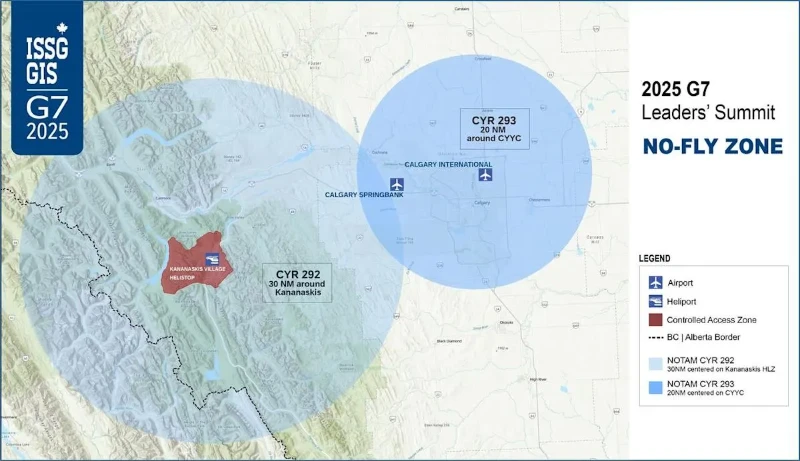Fighter Jets Scramble as Civilian Plane Breaches G7 No-Fly Zone Over Kananaskis

On Sunday, the North American Aerospace Defense Command (NORAD) dispatched fighter jets to intercept a civilian aircraft that had entered a no-fly zone set up for the G7 conference.
According to a news statement from the G7 Integrated Safety and Security Group, the fixed-wing aircraft entered restricted airspace above Kananaskis.
CF-18 Hornet fighter fighters were dispatched to intercept the aircraft. NORAD's Canadian region took "multiple steps" to catch the pilot's attention before using "final warning measures" to contact him.
According to the Integrated Safety and Security Group, the pilot successfully landed the civilian aircraft under their power and was welcomed on the ground by RCMP officers.
"It is every pilot's responsibility to ensure that there are no restrictions in the air space they intend to fly," according to the news release.
"These incidents take away resources that could be utilized in police work and securing the summit site."
Temporary airspace restrictions over Calgary and Kananaskis have been in effect since Saturday morning.
One no-fly zone is centred on Kananaskis hamlet and extends 30 nautical miles. Another is centred on Calgary International Airport and has a radius of 20 nautical miles.
Restrictions will be applied in both areas until Tuesday at midnight.
NORAD is a US-Canada binational agency in charge of aerospace warning and control. The organization is using aircraft and soldiers from both the Canadian and United States forces to safeguard world leaders and other attendees during the G7.
The event is currently being investigated, according to the Integrated Safety and Security Group.